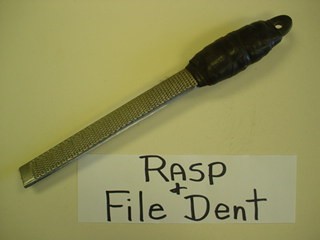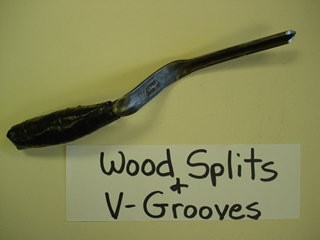Question
I have been playing around with various antiquing and distressing techniques. I am mainly interested in distressing (cracks, nicks, gouges, scratches, etc.) but also antiquing (layering, burn throughs, crackles, etc.). I'm looking for new methods that look authentic.
Forum Responses
(Finishing Forum)
From contributor R:
If you have a Goodwill or a Salvation Army in your area, you can pick up some pretty beat up furniture for next to nothing. Beat up furniture usually has a whole lot of natural distressing and this will give you some idea on the 5 W's. It's so easy to overdo distressing - it ends up looking bad.

Cowtail brush:

Rasp and file denting:

Wood splits and V-grooves:

Worm hole distressing tool:

For the finishing business, there are three overlapping ways of achieving this look:
There's the manufacturer's approach to mass producing "antique" looks on their retail furniture suites. Check out the websites and the retail locations to familiarize yourself with what's on the market. Many customers have already done this and they're looking to you to give them what they've already seen, already want and already expect.
There's that certain class of wood finishing that designers and decorators are looking for. You have to meet the level of expectation of these decorators and designers.
Then there's the art and deceit of reproducing and/or faking that aged look and making it look as authentic as possible. Ethics aside, tackle each project on its own merits using your own sense of integrity and morals. Do it or walk from it, but don't reveal your red suit and devil's horns and don't brag about your halo and white-feathered wings growing out of your back. But the techniques used here are art.